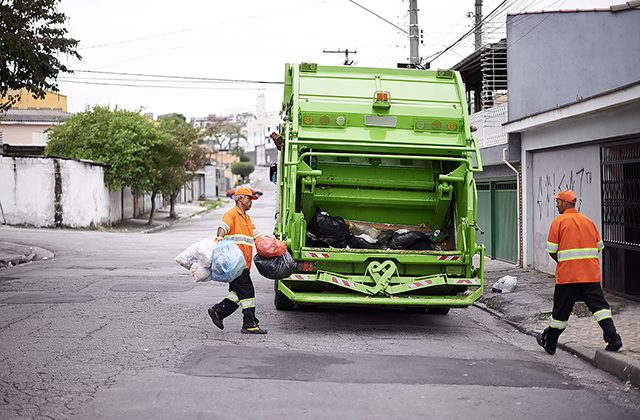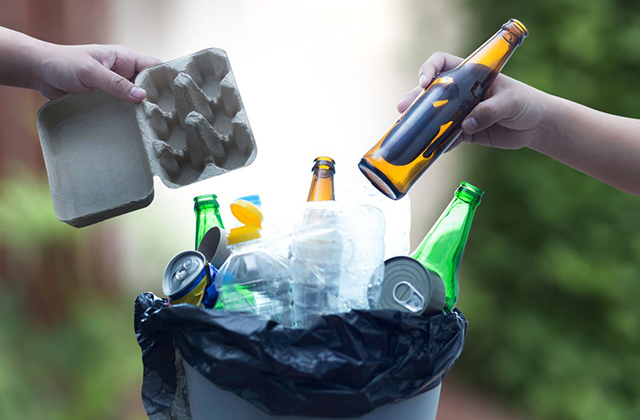Compost bins are becoming more widely used today as more and more people are planting gardens and doing their own landscaping work. There are quite a few ready made bins and compost drums available but if you have sufficient space for a pile and don’t mind a little work, you can build this one for pennies. Learn about the waste disposal Northern Beaches and recycling collection services.
We keep a few chickens for eggs so we have a steady supply of manure at our disposal. In late fall after everything has been harvested from the garden beds, we apply a good layer of mixed manure and straw from the coop over each bed for the winter. Winter snows slowly rot most of the straw and leach the down manure into the beds.
The balance of the year we place the excess straw and manure in a couple of quickly made compost bins made with steel posts and chicken wire.
Select a location far enough away from the house and heavy foot traffic areas for your bin(s). If the pile gets a little too wet, they can sometimes emit an odor. By simply turning the material over and adding more air, cures this problem. My compost piles are four foot by four feet and are four feet high.
Using five foot long posts, drive them in the ground making a square four feet on each side. The fencing wire you selected must have small enough holes to prevent the manure and other material from simply falling through the wire. Twenty gauge chicken wire is great and costs about forty dollars for a four foot by fifty foot roll. One side of each bin needs to be able to “open” for access.
Turning over the pile’s materials and removal of the finished compost is a lot easier if you can open one entire side. Fasten the wire to one corner post on what will be the front of the bin. Make sure no wire end stick out that might snag you later on and cause an injury. Continue around the bins fastening the wire to the other posts as you go. Cut the wire when you return to the starting post but leave an extra six inches of fencing wire. Fasten a four foot piece of two by four lumber to the end of the fence fabric being careful to bend and cover all the sharp ends of the wire. Do not connect the end of the fence fabric with the wood to the last post. This last section is your door to the bin. Using plain rope or chain make a couple of hooks or ties to grab the wooden end piece thereby closing the bin.
You can start your bin with a layer of manure and straw. The add some topsoil, another layer of manure and straw and so on. Make sure the materials are damp before you cover them with the next layer. As you proceed with filling up the bin you may add things like tea bags and coffee grounds, Here are a few others I have found listed that you have never thought of and are probably paying to have hauled away in the garbage. Paper napkins, freezer-burned vegetables, pet hair, freezer-burned fruit, wood chips, lint from behind the refrigerator, hay, straw, popcorn (un-popped), (chickens love the corn already popped) freezer-burned fish, old spices, leaves once mulched and matches (paper or wood) from your fireplace.
Do not add wood stove or pellet stove ashes as they may contain chemicals not wanted in your gardens.
I have found that by turning this mixture over every few weeks, it keeps plenty of air in the piles
and keeps the decomposition working well. Some people who take their composting seriously, add some earth worms to aid in the process. My compost piles always seem to have adequate worms that found the piles all by themselves.
You want to watch the piles to make sure they do not dry out. Dry piles will not decompose. When turning the piles, know more to use a hose and wet the materials as you turn them keeping them moist but not soggy. If rain is making the piles too wet, simply add a small tarp over the bin leaving a nice 3-4 inch air space for ventilation at the top of the pile.
Since we get manure year round, the compost piles mature at different times however the piles do not go “bad” and can be used as they mature.
One last word, do not add meat to the compost piles. Meat can draw unwanted animals to your property as well as when rotting can produce some pretty awful odors. You may not mind but your neighbors will and it will surely draw a complaint to the local building department.
Pete
Your Friendly Building Inspector
http://www.Wagsys.com
BICES-Building Inspection & Code Enforcement software
Pete is a 30+ year building inspector with experience in both public and private construction industries. From schools to treatment plants, from private homes and condo projects, to large residential landscaping projects, he has worked both in the building design areas and field construction in the Eastern US. In 2006 he formed along with two other building inspectors, Wagsys LLC which produced software for municipal agencies in the fields of building departments, planning boards and Zoning Boards of Appeals.
Article Source: http://EzineArticles.com/expert/Peter_Ackerson/618010




